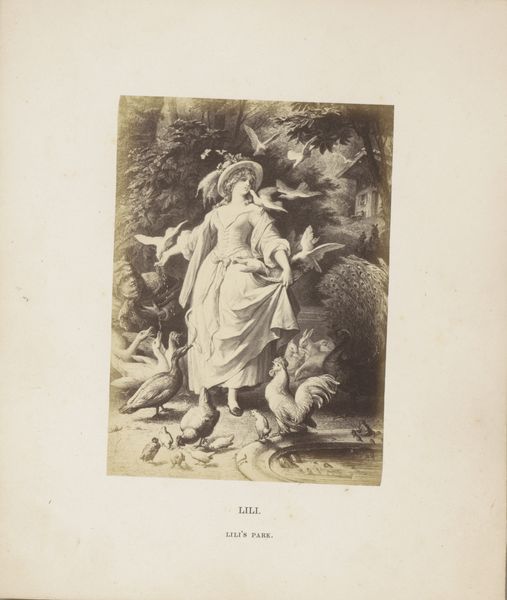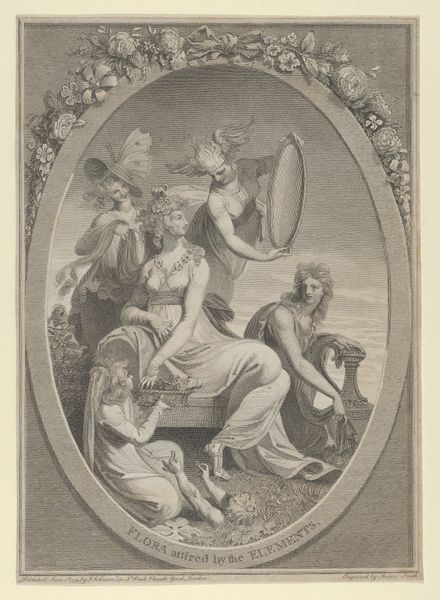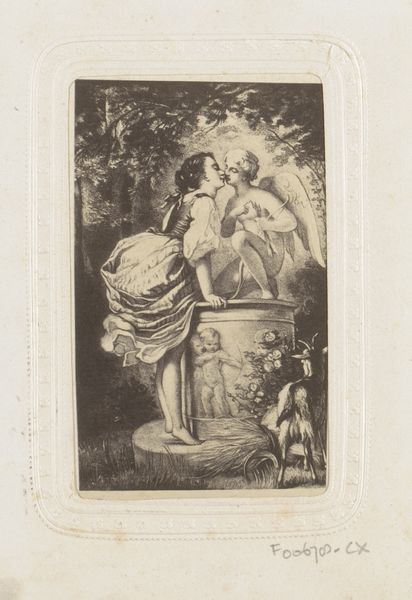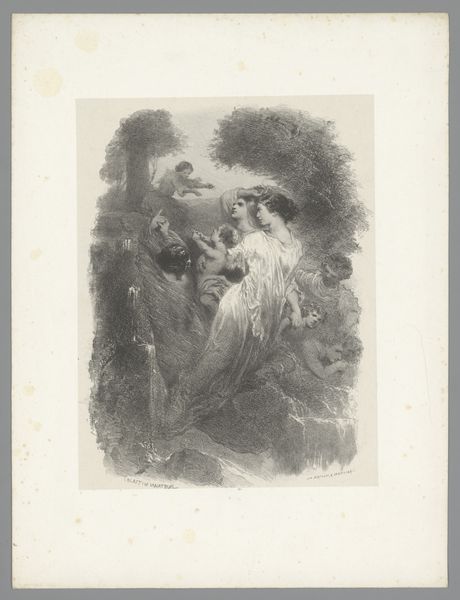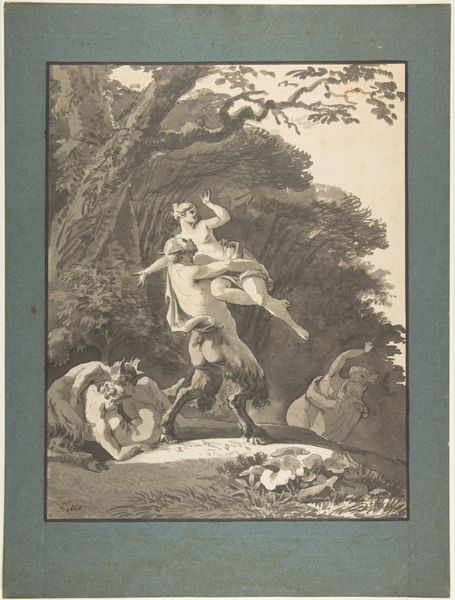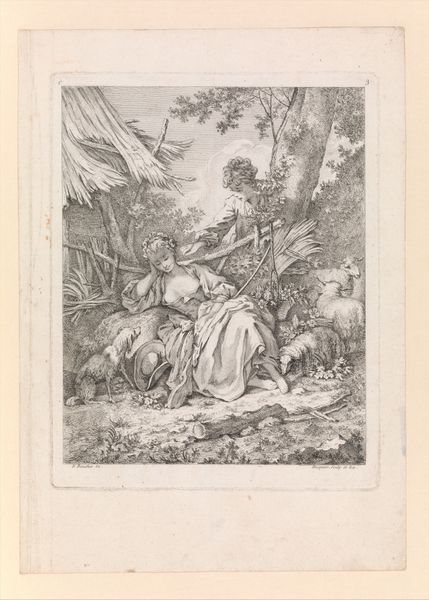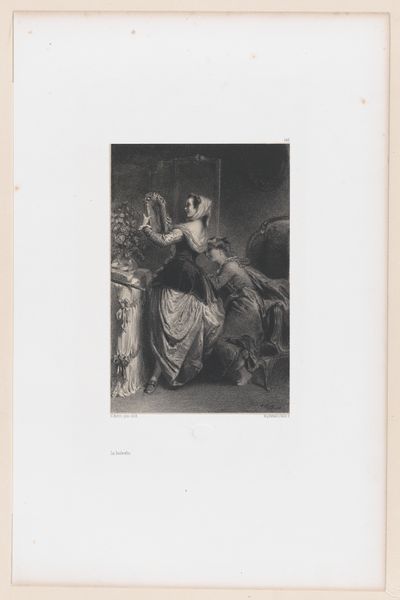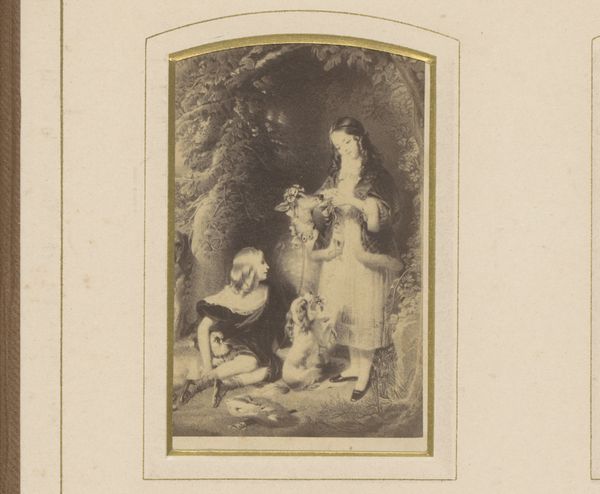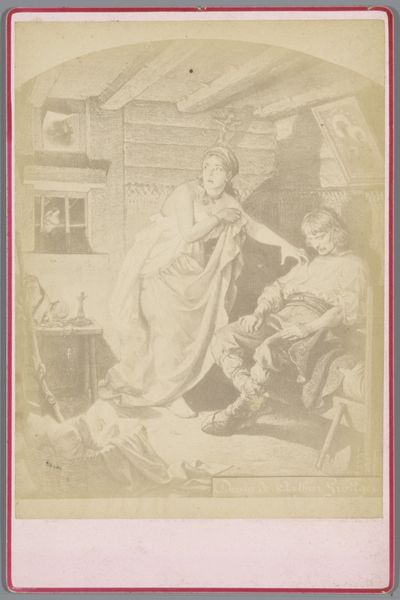
Fotoreproductie van een tekening van Lili uit een gedicht van Johann Wolfgang Goethe c. 1875 - 1910
0:00
0:00
anonymous
Rijksmuseum
Dimensions: height 129 mm, width 90 mm
Copyright: Rijks Museum: Open Domain
Curator: Let's turn our attention to this intriguing photographic print, dating from around 1875 to 1910. It's titled "Fotoreproductie van een tekening van Lili uit een gedicht van Johann Wolfgang Goethe," which translates to "Photographic reproduction of a drawing of Lili from a poem by Johann Wolfgang Goethe." It seems to be drawing inspiration from Romanticism, specifically genre-painting themes. Editor: Ah, it’s wonderfully dreamy, isn’t it? Like stepping into a pastoral fairytale. I imagine the light filtering through leaves, the rustle of silk… a rather self-aware, almost theatrical staging. Curator: Absolutely. Note how photography, a relatively new technology at the time, is being used to reproduce a drawing—thus commenting on reproduction itself and its accessibility to wider audiences. The source material, a drawing inspired by Goethe, suggests a mediation between literature and visual art. Editor: True! And the choice of subject--Lili. Goethe was, shall we say, quite taken with her. All those swooning poems! It drips with his longing gaze, wouldn’t you say? The woman is the central figure, bathed in light, an emblem for his obsession and, perhaps, inaccessible desires. The whole print possesses an uncanny sense of posing, even beyond typical photographic practices. Look at how staged her movements and that grouping of animals seems to be... the artist really makes use of space here. Curator: I agree; it feels meticulously arranged to create that specific "pastoral" feeling. Examining the material – photographic print – we see how techniques of reproduction enable distribution, embedding artistic representations into the wider culture. It moves images beyond the rarified gallery. Editor: Still, what does Lili herself feel about being eternally caught in Goethe's gaze, immortalized in sepia tones for our consumption? She doesn’t look too bothered. Is this, I wonder, how it feels to be the object of intense artistic scrutiny? Or worse: an idealized aesthetic? Food for thought there... Curator: I think by tracing the methods through which such images circulated we reveal cultural ideas about beauty, romance, and accessibility in late 19th-century Europe. Editor: So, it’s more than a pretty picture; it’s a document showing taste, art, poetry and society meeting each other and maybe winking as they acknowledge the complex web they have woven. Very clever!
Comments
No comments
Be the first to comment and join the conversation on the ultimate creative platform.
